#rumantsch
Text
oh right, speaking of the agricorps

behold, my specialest little boy: Nuot-Cla
#none drawing right nuot-cla#several fun facts about him include#his name is an actual name that exists and is the rumantsch version of Nikolaus#he is from stewjon bc i say so#he is a perpetually burnt chicken nugget#(sunscreen who dis)#and he is my most important agricorps oc#why?#because i love him and so should you#random boli thoughts#star wars#my art#jedi agricorps#star wars oc
21 notes
·
View notes
Text
i like reading the wikipedia articles of random languages for fun and its genuinely distressing to see just how many have like. maybe a couple hundred speakers. or even just a dozen or two. language extinction is so fucking tragic it makes me sick
#theres other languages that are higher up on my To Learn list but like#i lowkey wanna learn rumantsch just for fun and to keep it alive in some way#and that ones not even that endangered its still got many thousand speakers#ramblings
16 notes
·
View notes
Text
I feel like i run into a lot of hungarian speakers on here. Either that or italian
1 note
·
View note
Text
Father Orlik is one of the commentators for today's Bügla...this is going to be fun 😅
1 note
·
View note
Note
wait are u from switzerland and also how/where did u learn rumantsch? :0
I am indeed and my grandparents live in Engadin so like… picked it up from visits and vacations there? Aka the tv and shopping and just generally spending time. I cannot write any though, but I understand a few things
4 notes
·
View notes
Photo



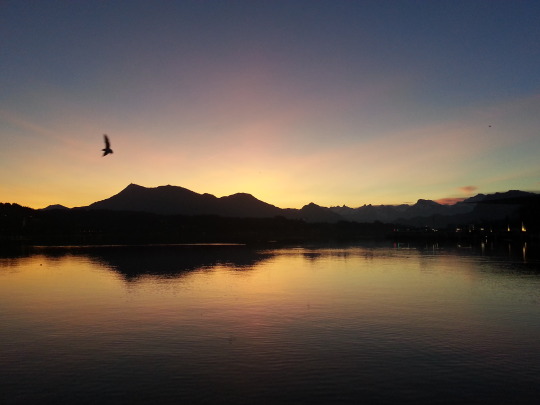




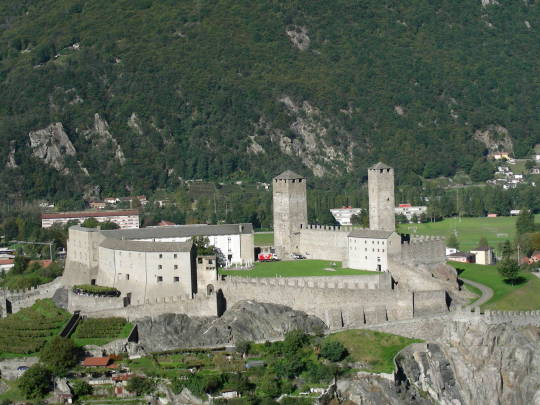
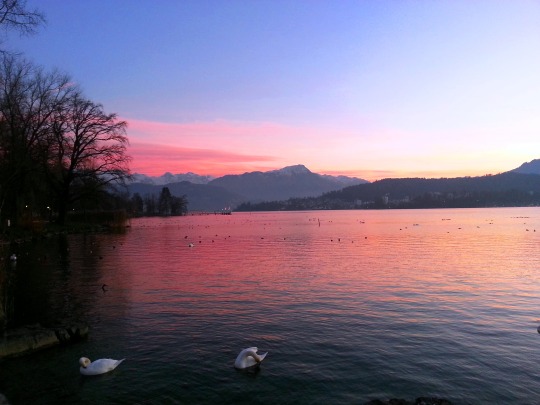
The Old Swiss Confederacy was formed with the signature of the Federal Charter on August 1, 1291.
Swiss National Day
Swiss National Day, celebrated on August 1, is the country’s national holiday. Although the Swiss Confederacy was founded on this date in 1891 and has been celebrated annually since 1899, it has only been an official holiday since 1994. Switzerland is a mountainous Central European country boasting several surreal lakes, villages, and the majestic Alps peaks. Its cities have medieval quarters and landmarks, such as the Zytglogge clock tower in Bern and the wooden chapel bridge in Lucerne. Furthermore, the country is renowned for its excellent ski resorts and adventurous hiking trails. Banking is an important industry, and Swiss watches and chocolate are well known around the globe.
History of Switzerland National Day
Every year on August 1, there are bonfires, paper lantern parades, fireworks, and Swiss flags swaying in the breeze. Swiss National Day was first established in 1891, yet it took more than a century for the hardworking Swiss to decide to hold a vote and give themselves the day off.
Switzerland is a mountainous landlocked country in South-Central Europe bordered by Austria, France, Germany, Italy, and Liechtenstein. With a geographic area of 41,285 square kilometers, the country is slightly smaller than the Netherlands and nearly twice the size of New Jersey in the United States.
Switzerland has fewer than 8.7 million people; the capital city is Bern, and the largest city is Zürich. German, French, Italian, and Rumantsch are the languages spoken in the country’s several regions, called cantons. According to the World Happiness Report 2021, the Swiss Confederation is the third-happiest nation on the planet, trailing only Finland and Denmark.
Geographically, the country is divided into three primary regions: the Swiss Alps in the south, the Alps in the north, and the Alps in the east. The Alps fade into the Swiss Plateau, which has a panorama of rolling hills, plains, and huge lakes. The Jura, a sub-alpine mountain range, lies to the northwest along the French/Swiss border.
Almost the entire country is a vacation destination. Switzerland features exquisite scenery with snow-capped mountains and ice-cold mountain lakes, melting glaciers, and mountain pastures that are ideal for downhill skiing in the winter. The relatively small country has four official languages as well as the world’s longest policy of military neutrality. The weather provides four distinct seasons that dramatically alter the scenery.
Switzerland National Day timeline
1648 Swiss Independence from Roman Rule
The Swiss gain independence from the rule of the Holy Roman Empire.
1848 Constitutional Amendments
Switzerland is established as a federal state under a new constitution.
1971 Women Can Vote
With 66% of the vote, a referendum guaranteeing women the right to vote in federal elections is approved.
2002 U.N. Membership
Switzerland becomes a member of the United Nations, an intergovernmental organization dedicated to world peace and economic growth.
Switzerland National Day FAQs
Is English spoken in Switzerland?
English is the most widely spoken non-national language in Switzerland, with over 45% of the population frequently speaking it.
What is Switzerland well known for?
When we think of Switzerland, we immediately think of ski resorts, lakes, chocolate, and cheese. The Alps mountains provide the ideal backdrop for Swiss people to raise cattle and create cheese and chocolate. They also make excellent ski trails and winter resorts.
What is the reason behind Switzerland's lack of capital?
Switzerland, unlike many other countries, did not have a genuine capital for many years. This was because it was a confederation for a long time, an association of separate cantons gathered together in a bigger body but without true cohesiveness.
Switzerland National Day Activities
Organize a family reunion
Participate in prayers and singing
Fly the Swiss flag
Celebrate by organizing large family reunions and barbecues. Communities throughout Switzerland mark the anniversary with bonfires, fireworks, and parades.
Prayer and the singing of the Swiss anthem are part of the official festivities (the Schweizerpsalm). Church bells sound around the country at 8:00 p.m.
No Swiss National Day celebration is complete without the Swiss flag. Wear the red and white with pride!
5 Interesting Facts About Switzerland
The Swiss Wed Late
There are 7,000 lakes in Switzerland
The right to bear arms
Diminutive
The Lowest Obesity Rate in Europe
A U.N. survey lists the average marriage age among Swiss people as 29.5 for females and 31.8 for males.
Switzerland's lakes are excellent for swimming and there are plenty to pick from.
Switzerland boasts one of the highest gun ownership rates among industrialized countries.
Switzerland has a land area of 15,942 square miles and a population of 8.67 million people.
Switzerland is a fantastic place to live a healthy lifestyle.
Why We Love Switzerland National Day
Celebrating Swiss culture
Celebrating the fight for independence
Inspiration for the future
Swiss National Day is a celebration of Swiss achievement and excellence. The observance is a time to reflect on the country’s contribution to the global community.
Throughout the year, different countries all over the world commemorate their independence days to remind various peoples of the struggles they had to endure to obtain freedom. These celebrations also have an educational value for the younger generation.
Often, achieving independence necessitates the sacrifice of thousands of lives. Every year, politicians seek to foster peace by commemorating Independence Day and paying honor to those who have died.
Source
#Avenches Roman Amphitheatre#Bern#Bundeshaus#Luzern#Lucerne#Vierwaldstättersee#Lake Lucerne#Swiss Alps#Bellinzona#Castelgrande#Melchsee Frutt#Old Swiss Confederacy#formed#1 August 1291#anniversary#Swiss history#Swiss national day#original photography#landscape#cityscape#countryside#River Aare#architecture#tourist attraction#Schweiz#Switzerland#Mount Pilatus#Mount Rigi#Stanserhorn#Seebodenalp
6 notes
·
View notes
Text
31.1.2024 | Sta Maria [Müstair] | 15.15h
Zwei Arbeiter machen Pause im Café der Bäckerei. Sie unterhalten sich auf Romanisch, unter anderem über il Internet und Steh- und Sitzplätze. Später kommt eine Gruppe von fünf Frauen, vier ältere und eine jüngere (K. würde sagen „peppig“). Auch sie reden Rumantsch. Als es um eine Krankengeschichte geht, wechseln sie in den Dialekt. Sie bestellen Kräutertee und essen keinen Kuchen.
2 notes
·
View notes
Text
If this unreliable self can become someone... - Part 2 (Annotated Edition)
"I'll teach you," Toji-san had said, and Yuuta was thankful for it. "I'll teach you," Yuuta wants to say in turn. There's no way he can ever show how truly grateful he is, but the least he can do is try. [Edo AU]
read on AO3
read on FFn
Once again I bring y’all commentary on my own writing, because I am unstoppable. As promised, there are plants and samurai in there ! And swords, although that’s more for the fic itself.
“The weather here is warmer than back home […]”
My personal headcanon is that Yuuta comes from Aomori, the northernmost region of Honshu (Japan’s main island). The reasoning actually comes from Rika’s backstory, with her dad taking her hiking in the mountains and then them getting lost in a blizzard… I don’t know, I just think it makes sense for them to be from a very cold, snowy region.
Anyway in this story he doesn’t come from Aomori itself, but rather from a small mountain village in what will become the Aomori prefecture. The kind of small village that doesn’t even have a name, because it’s the only one in the valley and the closest other settlement is on the other side of a mountain in another valley and you only see the people from there maybe once of twice a year when the weather allows it.
Fun unrelated fact, but in Switzerland some mountainous valleys in Graubünden were so isolated that they developed different dialects. So now we have multiple versions of Rumantsch, which has like 40k speakers in total.
Yomogi (ヨモギ)
A species of mugwort also known as Artemisia Princeps, or Japanese mugwort. Its leaves are used in cooking to make kusamochi, but the juice is also used in traditional medicine as a way to prevent bleeding or to lower fevers.
Antiseptic
I kept this one vague, because while I do know that in the European Middle Ages, wild leek and related plants would be used as medicinal plants to prevent infections, I am not sure if that was the case in Japan. Probably was, since those are pretty common plants and that’s usually the basis for that kind of use, but I have no certainty and I don’t want to say anything stupid.
I do know that leeks are supposed to cure colds according to Japanese folk medicine, so that’s something at least. If you have a cold, tie a leek around your neck and you’ll be fine in no time ! (probably)
The paste for the bruises
Once again, my knowledge betrays me. I do have the titles of references I could turn to, but unfortunately they’re in Japanese, and my reading abilities stop at comics. Not even sure I could even get my hands on them if I could read them, anyway.
What I can tell you about folk medicine though, is that in the Alps (and generally northern Europe) we use Arnica Montana grinded up to a paste for bruises and insect bites, although its effects haven’t been proven scientifically. It’s still a very popular remedy in any case, and if anything putting something cold on bruises helps with the pain, whether it has actual medical properties or not.
How do you even stop being a samurai ?
Technically, there are a few options. If your daimyou dies and you find yourself without a Lord to serve, or if you just get kicked out of his service, you’ll become a rônin. Same if you run away for some reason. That’s not exactly a good thing, but it’s nothing that can stop you from finding a normal job and just living life as a commoner (like lots of actual samurai were also forced to at the time), or from finding another Lord who will take you into his service.
Of course, the Zen’in hate Toji’s guts, so they instead had him declared officially dead. Which is immensely more permanent. It also means Toji lost all privileges given to the samurai caste, such as the right to bear sharp weapons (like swords). Not that it’s going to stop him, since there’s not much of a law enforcement on the road.
It’s also worth noting that the Zen’in are, safe for a few ghostly details, a pretty traditional samurai clan – serving a daimyou, probably participating in poetry contests and the like from time to time… During the Edo era, the number of samurai capable of keeping this way of living got much lower, due to the long-lasting peace, with most of them having to turn to commerce or to governmental offices like the machikata to make a living. So for the Zen’in to be able to remain the same way as they used to before the Edo era… it speaks to their wealth and political power.
Laundry
You can actually make soap with wood ashes, although normally you should let it rest for way longer than in this story. Apparently pines make the best ashes for that purpose ?
If you can, please use a softer support than rocks when doing the actual washing though. Wood works good, and risks damaging the textile way less.
Quarter-hour
Hours in Edo-era Japan were worth roughly two of ours. So Toji has actually been scolding Yuuta for 30 minutes, or what feels like it at the very least. Press F for our boy ú.ù
Sun (寸)
An old unit of length used in Japan before the Meiji era (although it’s still used currently for some trades, like carpentry). It’s equivalent to the Chinese cun, and measures about 3cm (or 1.2in).
And we’re done ! This time was much shorter, but I guess that’s to be expected when the characters are mostly isolated from civilization. Next time though, we’ll be back in town babey !!
#jujutsu kaisen#yuta okkotsu#yuuta okkotsu#okkotsu yuuta#fushiguro toji#toji fushiguro#rika orimoto#orimoto rika#yumi writes#manifesto commentary#jjk edo AU#here i go again#i Will make this dynamic popular i swear
6 notes
·
View notes
Text
What languages does Barlows support?
I wanted to feature all the different languages that Barlow supports
English, Greek, Greenlandic, Guarani, Haitian Creole, Hausa, Hawaiian, Hiligaynon, Hill Mari, Hmong, Hopi, Hungarian, Ibanag, Icelandic, Iloko (Ilokano), Kurdish, Kurdish (Kurmanji), Kyrgyz (Cyrillic), Ladin, Latvian, Lithuanian, Lojban, Lombard, Low Saxon, Luxembourgian, Macedonian, Malagasy, Malay (Latinized), Maltese, Northern Sotho (Pedi), Norwegian, Occitan, Oromo, Ossetian, Pangasinan, Papiamento, Piedmontese, Polish, Portuguese, Potawatomi, Quechua, Rhaeto-Romance, Romanian, Romansh (Rumantsch), Rotokas, Russian, Rusyn, Sami (Inari), Sami (Lule), Sami (Northern), Samoan, Sardinian (Sardu), Scots (Gaelic), Serbian (Cyrillic), Serbian (Latin), Seychellois Creole (Seselwa), Shona, Sicilian, Slovak, Abkhaz, Afrikaans, Albanian, Alsatian, Aragonese, Arapaho, Aromanian, Arrernte, Asturian, Aymara, Azerbaijani (Cyrillic), Bashkir, Basque, Belarusian, Belarusian (Lacinka), Bislama, Bosnian, Breton, Bulgarian, Buryat (Cyrillic), Catalan, Cebuano, Chamorro, Chechen, Cheyenne, Chichewa (Nyanja), Chuvash, Cimbrian, Corsican, Indonesian, Interglossa (Glosa), Interlingua, Irish (Gaelic), Istro-Romanian, Italian, Jèrriais, Kabardian, Kalmyk (Cyrillic), Karachay (Cyrillic), Kashubian, Kazakh (Cyrillic), Khakas, Khalkha, Khanty, Kildin Sami, Komi-Permyak, Croatian, Cyrillic, Czech, Danish, Dungan, Dutch, English, Esperanto, Estonian, Evenki (Cyrillic), Faroese, Fijian, Finnish, Tongan (Faka-Tonga), Tswana, Turkmen, Turkmen (Cyrillic), Turkmen (Latinized), Tuvaluan, Tuvin, Udmurt, Ukrainian, Ulithian, Uyghur (Cyrillic), Uyghur (Latinized), Uzbek (Cyrillic), Veps, Vietnamese, Volapük, Votic (Cyrillic), Votic (Latinized), Walloon, Warlpiri, Welsh, Xhosa, Yakut/Sakha, Yapese, Zulu.
4 notes
·
View notes
Text
petition for our next fucking esc song to be in fucking swissgerman
or rumantsch
i've had it with the ballads. and if we gotta do that again, at least make it ANY language other than english my guys. i beg you
#sponsored by remos song beibg played on repeat in the radio#random boli thoughts#also. putting this here as a form of manifestation 🙏🏻🙄#please esc gods hear my prayer#eurovision
64 notes
·
View notes
Text
These are my very ignorant thoughts about war, peace, and cultural differences altogether. Beware potential bullshit ahead.
tldr: peoples come and go, the concept of land ownership is idiotic, cultural differences are not what causes conflict, authorities pitting groups against each other (mostly for profit) are what causes conflict, but the conflict goes on because people hurt each other so bad forgiveness is no longer an option.
I do not understand the history of russia, ukraine, palestine and israel well. Certainly not as well as i understand the history of my own region.
But all three cases, i believe, there is the similarity of governments enciting the violence of different cultures against one another, in a way that ends up harming civillians more than anything else.
The truth, in my opinion, is that it's not intrinsecally impossible for people to live peacefully with one another just because of culture, religion, traditions, ideologies, what will you.
What makes it hard, is the harm that people have been forced to do, have been convinced to do, and found themselves with no other choice than doing to each other, either by governments or by the extenuating circumstances of being robbed of all they had, be it culturally or from a material point of view.
People end up doing terrible things to each other, which just can not be forgiven by single people, but create wounds that can only be healed through the passage of time and the change of generations, and also, the comfort of freedom and not living in poverty.
The longer the war lasts, the more people die and suffer, the longer it will take for those wounds to heal. Peace can not be brought by war. It can only be born from peace. A peace treaty made after a war, where the losing party is completely getting fucked over, will only lead to new insurrections, grief, anger and more war (see germany after the treaty versailles).
To illustrate my point i would like to put forward the case of my region, which is south tyrol. South tyrol was a part of the austro-hungarian empire, populated mostly by german speakers. When the entente won the war, the region was given to italy, it is said, because of the natural border of the alps that separated it from austria.
Now, from a nationalist point of view italy does not give a shit about south tyrol, because there aren't many people who are culturally "italian". However, the fascists thought, if it's not italian, let's MAKE IT italian. yes. wonderful idea. Let's force the german speakers to change their name to an italian one, let's force them to abandon their culture.
ALSO let's literally deport poorer italians to the region so it becomes mainly populated by italians, who will work in the new industries and win the elections, and also make it impossible for south tyrol to ever try to leave, because italians live there too now. GREAT.
But this is only the surface level story. Another folk who got fucked over, still in the fourteen hundreds are the ladin people. They speak a language similar to the rumantsch spoken in switzerland. All official documents in south tyrol were written in ladin before the region was forcibly germanified.
There also were a few italians already living there. My ancestors for example. Half my family is from a long line of italians who lived in the habsburg empire and spoke german as a second language. Just like i do.
My great-great-grandfather for example was an austro hungarian inspector, who died immediately before the outbreak of ww1. (I know, a cop. not proud of it, but in the next generation, half of my relatives were fascists. so. like. there generally isn't much to be proud of).
After the end of ww2 every one was fucking pissed at each other. With the level of poverty, peple had nothing to lose, and many rights to gain back after the fall of fascism. I won't go into details, but in the 70s it came to serious acts of terrorism from the german speakers, and also from austrians who thought they were fighting for the freedom of a people, against italians who hadn't even asked to be there in the first place.
While the situation has calmed down, because the italian state has pumped our region full with money, and given the germans their names back, and allowed our region to keep most of our taxes, it became less profitable to make politics that encites violence and scission. It does not mean this has stopped. It goes on, people are still making money from it. The two cultures are wary of each other, and the school systems are still devided. When we turn 18, we are asked to declare to which group we belong.
But anyway, the final point i wanted to make, is that a power can always feed propaganda to one side, while starving and impoverishing the other, and taking away their rights until things snap. You can do this with any group of people. Could be the most bullshit criteria, the most insignificant difference. And then, the difference will be considered the reason for violence. Not the powers that put two groups against each other.
And alas, people come and go naturally from place to place, cultures mix, interact, break apart, develop, and things will always be changing. We don't own the land we live on, we are only temporarily borrowing it. Thousads were here before us, more will be here after us. Same with the other living beings. Nationalism is doomed for this reason.
Go in peace; don't let politicians make you angry at other groups of people that have no authority over you. They're just people-ing, like you.
1 note
·
View note
Video
youtube
And this is Rumantsch, the language of Engiadina. Do you understand a bit?
0 notes
Text
Thursday 14 November 2002 - a very gray Bündner land visit - half price ice cream - The Hardhof near ZH Altstetten - supper at the Zeughauskeller
14 November 2002
EN Hi everyone. Twenty years ago today, I took a train from Zürich HB to Chur, past Thalwil, Pfäffikon SZ, Ziegelbrücke and Sargans. I managed to record some Rhätorumantsch from the RTR station and buy a Rhätorumantsch newspaper. Also a shop at the SBB rail station in Chur was having a half-off sale on ice cream, and rightly so because the weather was lousy, but not too cold. I visited the area, and had supper at the Zeughauskeller, close to Paradeplatz. It was a nice end to a visit to Zürich.
DE Hallo allerseits. Heute vor 20 Jahren fuhr ich mit dem Zug von Zürich HB nach Chur, vorbei an Thalwil, Pfäffikon SZ, Ziegelbrücke und Sargans. Ich habe es geschafft, etwas Rhätorumantsch vom RTR-Sender aufzunehmen und eine Rhätorumantsch-Zeitung zu kaufen. Auch ein Geschäft am Bahnhof SBB in Chur hat Glace zum halben Preis verkauft, und das zu Recht, denn das Wetter war mies, aber nicht zu kalt. Ich besuchte die Gegend und aß im Zeughauskeller in der Nähe des Paradeplatzes zu Abend. Es war ein schöner Abschluss eines Besuchs in Zürich.
DK Hej allesammen. For tyve år siden i dag tog jeg et tog fra Zürich HB til Chur, forbi Thalwil, Pfäffikon SZ, Ziegelbrücke og Sargans. Det lykkedes mig at optage noget Rhätorumantsch fra RTR-stationen og købe en Rhätorumantsch-avis. Også en butik på SBB-banegården i Chur havde et halvt rabatudsalg på is, og det med rette, fordi vejret var elendigt, men ikke for koldt. Jeg besøgte området og spiste aftensmad på Zeughauskeller, tæt på Paradeplatz. Det var en dejlig afslutning på et besøg i Zürich.
SE Hej allihopa. För tjugo år sedan idag tog jag ett tåg från Zürich HB till Chur, förbi Thalwil, Pfäffikon SZ, Ziegelbrücke och Sargans. Jag lyckades spela in lite Rhätorumantsch från RTR-stationen och köpa en Rhätorumantsch-tidning. Också en butik på SBB järnvägsstation i Chur hade halvrea på glass, och det med rätta eftersom vädret var uselt, men inte för kallt. Jag besökte området och åt middag på Zeughauskeller, nära Paradeplatz. Det var en trevlig avslutning på ett besök i Zürich.
FR Salut tout le monde. Il y a vingt ans aujourd'hui, j'ai pris un train de Zürich HB à Coire, en passant devant Thalwil, Pfäffikon SZ, Ziegelbrücke et Sargans. J'ai réussi à enregistrer du Rhätorumantsch de la station RTR et à acheter un journal Rhätorumantsch. De plus, un magasin de la gare CFF de Coire proposait des glaces à moitié prix, et à juste titre car le temps était maussade, mais pas trop froid. J'ai visité la région et j'ai dîné au Zeughauskeller, près de la Paradeplatz. C'était une belle fin de visite à Zurich.
Guten Morgen! Good morning!
After visiting Valais, Geneva and Frauenfeld, I thought it would be good to see Graubünden once more. It would be my second visit since September 2000, when I also visited the Principality of Liechtenstein. I woke up about 6:30 AM, took a shower, ate breakfast downstairs, checked the train schedules on the coin operated internet terminals, and then took the bus 33 and tram 7 to Zürich HB, to catch the Intercity train to Chur. I was on a Dosto in first class and sat on the left side. If you are on a Dosto riding from Zürich to Chur, you should sit on the left side, so that you can see Lake Zürich after passing through Thalwil ZH, and Walensee between Ziegelbrücke GL and Walendstadt SG. Prior to the Zimmerberg base tunnel construction, you could have a good view, particularly between Zürich-Enge and Pfäffikon SZ. Now it is only possible between Thalwil and Pfäffikon.
Along the way I was listening to the AM frequency of DRS2 and the local FM frequency DRS3, I think, out of the Chur region. DRS2 was playing classical music, and I remember one song on DRS3 being "Round Round" by the Sugababes, followed by "Spiegelbild" by Swiss rap group Subzonic. I made it a point, to record off the radio from the RTR frequency, as it would be in the Rhaeto-Rumantsch language. For those who may not know Rhaeto-Rumantsch, it is a romance language with similarities to Latin, with some words sounding like they may be from French, Italian, and it sounds a bit like Latin being spoken with a Swiss German accent. If you have ever seen Swiss Francs, from the 10 Franc to the 1,000 Franc banknote, you might notice next to the German-language "Banknoten sind strafrechtlich geschützt", there is the Rhaeto-Rumantsch translation: "Las bancnotas èn protetgidas dal dretg penal", which basically means "banknotes are protected by criminal law". Some places in Graubünden will have a Rhaeto-Rumantsch name different than the German name. For instance Disentis is called Mustér.
The train stopped pretty much at the same stations as when I was riding to Sargans on 11th September 2000. There was even the transfer to Glarus at Ziegelbrücke, which I would visit on Sunday 10 August 2003. The St. Galler Oberland across the Walensee from the train tracks was very nice to see. The weather was generally not so good that day. Was mostly soggy and chilly, but not freezing and there was no snow. The train stopped at Sargans and passed through Bad Ragaz before crossing the Rhine into the canton of Graubünden. The train passed through Maienfeld, some people will know this village in Graubünden as the home of the Heidi Village, from the literature written by Swiss author Johanna Spyri. Landquart GR was the next stop before Chur. The train arrived in Chur about 11 AM. It is too bad that I did not plan to take the train eastward towards Davos or Tirano. Those are reputed to be the most scenic train rides, and one of them even has the World Heritage certification.
I had my radio set to the RTR station to record Rhaeto-Rumantsch. Eventually I tuned back to DRS3. To this day it is quite remarkable to have heard the Rhaetorumantsch translation of the hymn "How great thou art" and then on DRS3 to hear an uncensored version of Warren G's "What's love got to do with it". Later on I would hear "If I were a sailor" by Midge Ure, formerly of Ultravox.
At the local Co-Op grocery store, I bought some Emmenthaler, some ham and bread. It was enough to make a sandwich. I think I bought a bottle of Sinalco, the Swiss equivalent of Orange Fanta as found in Germany and much of Europe, but not the USA. I did some shopping, and found a Buffalo clothing and shoe store. I also went into the Manor department store. Both stores offered me their 32-page minicatalogs for free.
It was about half an hour before the train to Zürich HB would depart from Chur. I went up to the Busbahnhof to see mountains in the direction of Liechtenstein and also Heidi's small village of Maienfeld. There was not much snow. The weather was a bit rainy, maybe just a shower, and temperatures about 43 F / +6 C. Kind of really meh-weather.
I took the train back pretty much the same way as I had come earlier. I ended up in Zürich HB, and took a line 6 tram towards Werdhölzli. That part of Zürich, I had not previously visited, other than along the trolleybus route 32 from Altstetten and Farbhof towards Schlieren. There is a stadium close to Hardturm where FC Zürich plays its home games. There was no match that day, but it was good to see where they played. I took the tram 6 to Escher Wyss Platz and transferred to the tram line 8 to Bürkliplatz to see Zürichsee. I walked from Bürkliplatz to Bellevue, then on the Niederdorferstrasse to window shop, but not much else. I had already eaten at the Brasserie Johanniter, so I wanted to eat somewhere else, but maybe not the Blinde Kuh, near the Höschgasse tram stop on lines 2 and 4. My parents had recommended going to the Zeughauskeller restaurant near the Paradeplatz tram stop, so I walked across the Rudolf Brun Brücke to Rennweg where the Modissa department store was located, then down to Paradeplatz. The sign for the Zeughauskeller, the set of yellow calligraphed letters spelling out "Zeughauskeller", was brightly lit and was opened for business. So I went inside.
The Zeughauskeller looked really well kept up. It has been a restaurant only since 1926, but it was a warehouse of weapons from as far back as 1487. There is even a working built-in clock on the wall. I ordered a Zeughauskeller house beer in a liter glass. It was really good. With that, I ordered the veal sausage plate, which came with potato salad. For dessert, I had something seasonal, walnut mousse with whipped cream. I had that with an espresso. It was excellent. The only other time I had walnut mousse, would have been on 5th December 2016 in the Verkehrshaus (Transit Museum) in Lucerne.
It was a really good end to my visit to Zürich that year. Well, I had to go back to the hostel on Mutschellenstrasse, yes, the one painted mauve. I had to sleep, because the next train journey, with luggage, would be long, namely from Zürich HB to Stuttgart, and farther north to Nuremberg Hbf. Please join me tomorrow, when I take the train to Stuttgart and on to Nuremberg, try to find my way to the Höfener Garten hotel, and visit to the M>1 club as suggested to me by someone.
Gute Nacht! Good night!
#Zürich HB#Enge#Thalwil#Schweiz#Pfäffikon SZ#Ziegelbrücke#Walenstadt#Walensee#Glarus#Sargans#Bad Ragaz SG#Maienfeld GR#Heidi#Johanna Spyri#DRS3#Sugababes#Round Round#Subzonic#Spiegelbild#Rhätorumantsch#Retica#Viafier#RhB#SBB#Chur#RTR#Emmentaler#Sinalco#Buffalo#Manor
0 notes
Text
Helvetica roman font download

HELVETICA ROMAN FONT DOWNLOAD INSTALL
HELVETICA ROMAN FONT DOWNLOAD PRO
HELVETICA ROMAN FONT DOWNLOAD PC
HELVETICA ROMAN FONT DOWNLOAD LICENSE
HELVETICA ROMAN FONT DOWNLOAD DOWNLOAD
HELVETICA ROMAN FONT DOWNLOAD DOWNLOAD
You can check out our Font Installation in the windows guide or a separate guide on the installation of Fonts in Mac. Download Helvetica Neue font for PC/Mac for free, take a test-drive and see the entire character set.
HELVETICA ROMAN FONT DOWNLOAD INSTALL
How to Install Helvetica Neue on Mac or Windows PC? The Arimo font is very close to the Helvetica Neue font. What’s the Closest Font to Helvetica Neue? Helvetica,Roman,Avalon Where is fonts Where can I freeload fonts of because there are these 3 that I dont even have and that is just sad. Character distribution range:Basic Latin,Latin-1 Supplement,Latin Extended-A,Latin Extended-B,Spacing Modifier Letters,Greek and Coptic,Arabic,General Punctuation,Currency Symbols,Letterlike Symbols,Mathematical Operators,Geometric Shapes,Dingbats. Of course! you can use the Helvetica Neue for your logo as well as all other graphic designs projects. HelveticaNeueLT Arabic 55 Roman Version 1.00 font (Font family name: Helvetica Neue LT Arabic Font style name: 55 Roman), 577 characters in total. Moreover, you can embed it to your website with font-face support. Yes! It’s free to download and use the Helvetica Neue on your mac and pc. Download Helvetica Neue LT font for PC/Mac for free, take a test-drive and see the entire character set.
HELVETICA ROMAN FONT DOWNLOAD LICENSE
Although we have indicated the license type, please make sure to double check it by reading the information shown in the details area of each font to avoid any confusion.
HELVETICA ROMAN FONT DOWNLOAD PC
The Helvetica Neue font is available to freeload for personal use but if you want to use it for commercial purposes then you might need permission from the owner.Ĭan I Download and Use Helvetica Neue Font in My Pc and Mac? HelveticaNeue-Roman fonts Download Fonts available at This web site are either GNU/GPL, Freeware, free for Personal use, Donationware, Shareware or Demo. Yes! You can use the Helvetica Neue website on your website and can make your website design more beautiful. It is a sans-serif typeface that was designed by Max Miedinger, and Eduard HoffmannĬan I Use Helvetica Neue Font on My Website?
HELVETICA ROMAN FONT DOWNLOAD PRO
Helvetica Pro Rounded Bold Condensed ObliqueĮnglish, Greek, Greenlandic, Guarani, Haitian Creole, Hausa, Hawaiian, Hiligaynon, Hill Mari, Hmong, Hopi, Hungarian, Ibanag, Icelandic, Iloko (Ilokano), Indonesian, Interglossa (Glosa), Interlingua, Irish (Gaelic), Istro-Romanian, Italian, Jèrriais, Kabardian, Kalmyk (Cyrillic), Karachay (Cyrillic), Kashubian, Kazakh (Cyrillic), Khakas, Khalkha, Khanty, Kildin Sami, Komi-Permyak, Kurdish, Kurdish (Kurmanji), Kyrgyz (Cyrillic), Ladin, Latvian, Lithuanian, Lojban, Lombard, Low Saxon, Luxembourgian, Macedonian, Malagasy, Malay (Latinized), Maltese, Northern Sotho (Pedi), Norwegian, Occitan, Oromo, Ossetian, Pangasinan, Papiamento, Piedmontese, Polish, Portuguese, Potawatomi, Quechua, Rhaeto-Romance, Romanian, Romansh (Rumantsch), Rotokas, Russian, Rusyn, Sami (Inari), Sami (Lule), Sami (Northern), Samoan, Sardinian (Sardu), Scots (Gaelic), Serbian (Cyrillic), Serbian (Latin), Seychellois Creole (Seselwa), Shona, Sicilian, Slovak, Abkhaz, Afrikaans, Albanian, Alsatian, Aragonese, Arapaho, Aromanian, Arrernte, Asturian, Aymara, Azerbaijani (Cyrillic), Bashkir, Basque, Belarusian, Belarusian (Lacinka), Bislama, Bosnian, Breton, Bulgarian, Buryat (Cyrillic), Catalan, Cebuano, Chamorro, Chechen, Cheyenne, Chichewa (Nyanja), Chuvash, Cimbrian, Corsican, Croatian, Cyrillic, Czech, Danish, Dungan, Dutch, English, Esperanto, Estonian, Evenki (Cyrillic), Faroese, Fijian, Finnish, French, French Creole (Saint Lucia), Frisian, Friulian, Galician, Genoese, German, Gilbertese (Kiribati), Manx, Maori, Meadow Mari, Megleno-Romanian, Míkmaq, Mohawk, Moldovan, Nahuatl, Nenets, Norfolk/Pitcairnese, Slovenian (Slovene), Somali, Southern Ndebele, Southern Sotho (Sesotho), Spanish, Swahili, Swati/Swazi, Swedish, Tagalog (Filipino/Pilipino), Tahitian, Tajik, Tatar (Cyrillic), Tausug, Tetum (Tetun), Tok Pisin, Tongan (Faka-Tonga), Tswana, Turkmen, Turkmen (Cyrillic), Turkmen (Latinized), Tuvaluan, Tuvin, Udmurt, Ukrainian, Ulithian, Uyghur (Cyrillic), Uyghur (Latinized), Uzbek (Cyrillic), Veps, Vietnamese, Volapük, Votic (Cyrillic), Votic (Latinized), Walloon, Warlpiri, Welsh, Xhosa, Yakut/Sakha, Yapese, Zulu.#2 Using CSS directive, put the following line in add to your css file.(http | https) url(//db./c/c5bd605b45237a12c99133fa9d7cae49?family=HelveticaW01-Roman) #3 Use font-face declaration Fonts.

0 notes
Photo
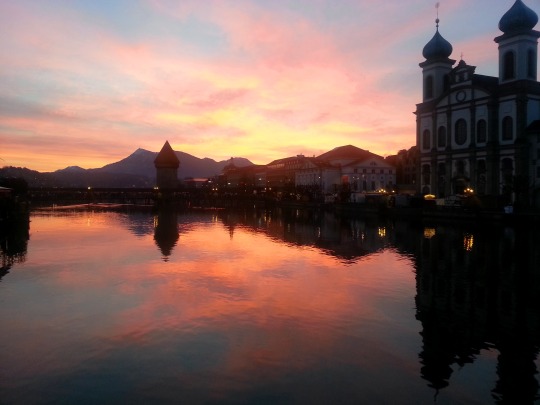
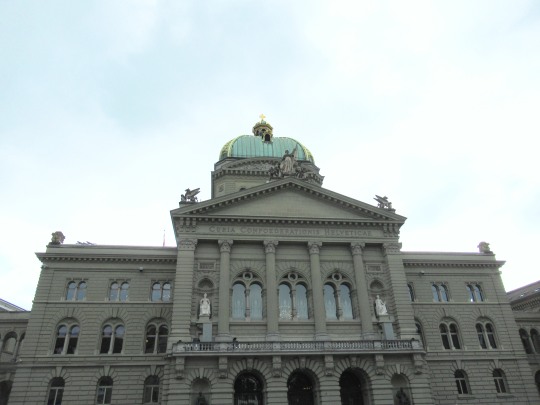

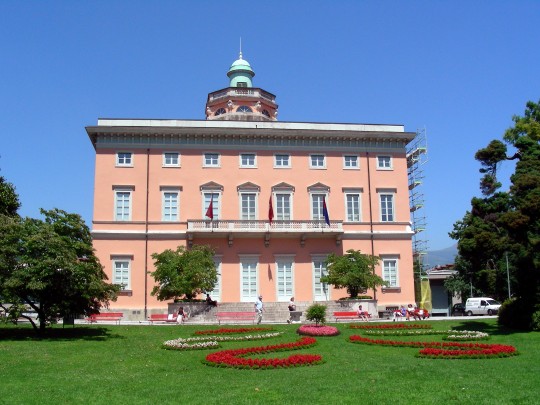

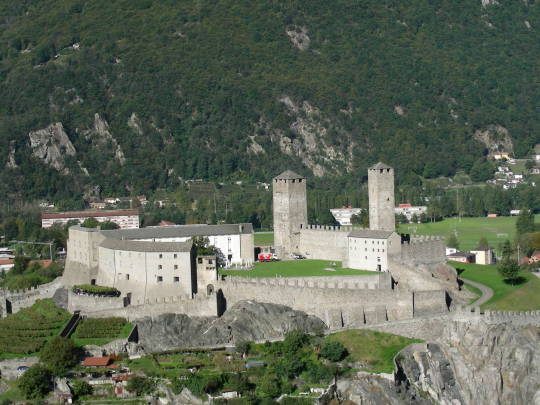



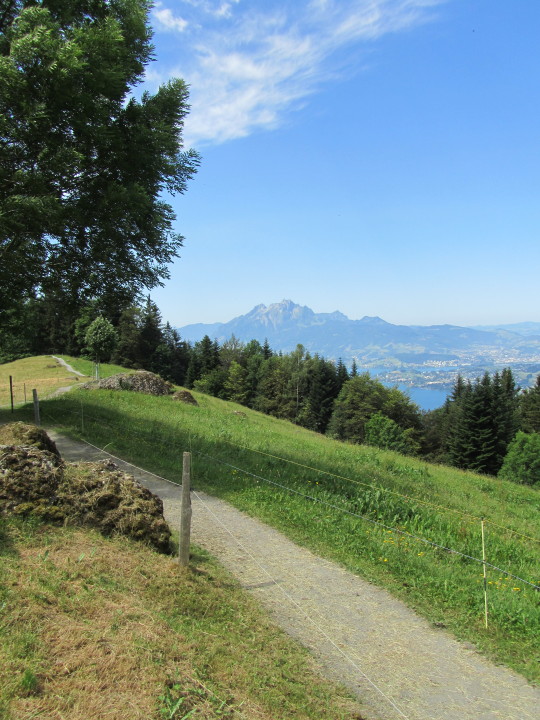
The Old Swiss Confederacy is formed with the signature of the Federal Charter on August 1, 1291.
Swiss National Day
Swiss National Day, celebrated on August 1, is the country’s national holiday. Although the Swiss Confederacy was founded on this date in 1891 and has been celebrated annually since 1899, it has only been an official holiday since 1994.
Switzerland is a mountainous Central European country boasting several surreal lakes, villages, and the majestic Alps peaks. Its cities have medieval quarters and landmarks, such as the Zytglogge clock tower in Bern and the wooden chapel bridge in Lucerne. Furthermore, the country is renowned for its excellent ski resorts and adventurous hiking trails. Banking is an important industry, and Swiss watches and chocolate are well known around the globe.
History of Switzerland National Day
Every year on August 1, there are bonfires, paper lantern parades, fireworks, and Swiss flags swaying in the breeze. Swiss National Day was first established in 1891, yet it took more than a century for the hardworking Swiss to decide to hold a vote and give themselves the day off.
Switzerland is a mountainous landlocked country in South-Central Europe bordered by Austria, France, Germany, Italy, and Liechtenstein. With a geographic area of 41,285 square kilometers, the country is slightly smaller than the Netherlands and nearly twice the size of New Jersey in the United States.
Switzerland has fewer than 8.7 million people; the capital city is Bern, and the largest city is Zürich. German, French, Italian, and Rumantsch are the languages spoken in the country’s several regions, called cantons. According to the World Happiness Report 2021, the Swiss Confederation is the third-happiest nation on the planet, trailing only Finland and Denmark.
Geographically, the country is divided into three primary regions: the Swiss Alps in the south, the Alps in the north, and the Alps in the east. The Alps fade into the Swiss Plateau, which has a panorama of rolling hills, plains, and huge lakes. The Jura, a sub-alpine mountain range, lies to the northwest along the French/Swiss border.
Almost the entire country is a vacation destination. Switzerland features exquisite scenery with snow-capped mountains and ice-cold mountain lakes, melting glaciers, and mountain pastures that are ideal for downhill skiing in the winter. The relatively small country has four official languages as well as the world’s longest policy of military neutrality. The weather provides four distinct seasons that dramatically alter the scenery.
Switzerland National Day timeline
1648 Swiss Independence from Roman Rule
The Swiss gain independence from the rule of the Holy Roman Empire.
1848 Constitutional Amendments
Switzerland is established as a federal state under a new constitution.
1971 Women Can Vote
With 66% of the vote, a referendum guaranteeing women the right to vote in federal elections is approved.
2002 U.N. Membership
Switzerland becomes a member of the United Nations, an intergovernmental organization dedicated to world peace and economic growth.
Switzerland National Day FAQs
Is English spoken in Switzerland?
English is the most widely spoken non-national language in Switzerland, with over 45% of the population frequently speaking it.
What is Switzerland well known for?
When we think of Switzerland, we immediately think of ski resorts, lakes, chocolate, and cheese. The Alps mountains provide the ideal backdrop for Swiss people to raise cattle and create cheese and chocolate. They also make excellent ski trails and winter resorts.
What is the reason behind Switzerland's lack of capital?
Switzerland, unlike many other countries, did not have a genuine capital for many years. This was because it was a confederation for a long time, an association of separate cantons gathered together in a bigger body but without true cohesiveness.
Switzerland National Day Activities
Organize a family reunion
Participate in prayers and singing
Fly the Swiss flag
Celebrate by organizing large family reunions and barbecues. Communities throughout Switzerland mark the anniversary with bonfires, fireworks, and parades.
Prayer and the singing of the Swiss anthem are part of the official festivities (the Schweizerpsalm). Church bells sound around the country at 8:00 p.m.
No Swiss National Day celebration is complete without the Swiss flag. Wear the red and white with pride!
5 Interesting Facts About Switzerland
The Swiss Wed Late
There are 7,000 lakes in Switzerland
The right to bear arms
Diminutive
The Lowest Obesity Rate in Europe
A U.N. survey lists the average marriage age among Swiss people as 29.5 for females and 31.8 for males.
Switzerland's lakes are excellent for swimming and there are plenty to pick from.
Switzerland boasts one of the highest gun ownership rates among industrialized countries.
Switzerland has a land area of 15,942 square miles and a population of 8.67 million people.
Switzerland is a fantastic place to live a healthy lifestyle.
Why We Love Switzerland National Day
Celebrating Swiss culture
Celebrating the fight for independence
Inspiration for the future
Swiss National Day is a celebration of Swiss achievement and excellence. The observance is a time to reflect on the country’s contribution to the global community.
Throughout the year, different countries all over the world commemorate their independence days to remind various peoples of the struggles they had to endure to obtain freedom. These celebrations also have an educational value for the younger generation.
Often, achieving independence necessitates the sacrifice of thousands of lives. Every year, politicians seek to foster peace by commemorating Independence Day and paying honor to those who have died.
Source
#Luzern#Lucerne#River Reuss#Kapellbrücke#Jesuitenkirche St. Franz Xaver#Stanserhorn#Swiss Alps#Bundeshaus#Mount RIgi#Bern#Schweiz#Switzerland#Avenches Roman Amphitheatre#Federal Palace of Switzerland#Seebodenalp#Mount Pilatus#River Aare#Castelgrande#Bellinzona#Ticino#Villa Ciani#Lugano#Old Swiss Confederacy#signature#Federal Charter#Bundesbrief#1 August 1291#Swiss history#landscape#Swiss National Day
14 notes
·
View notes